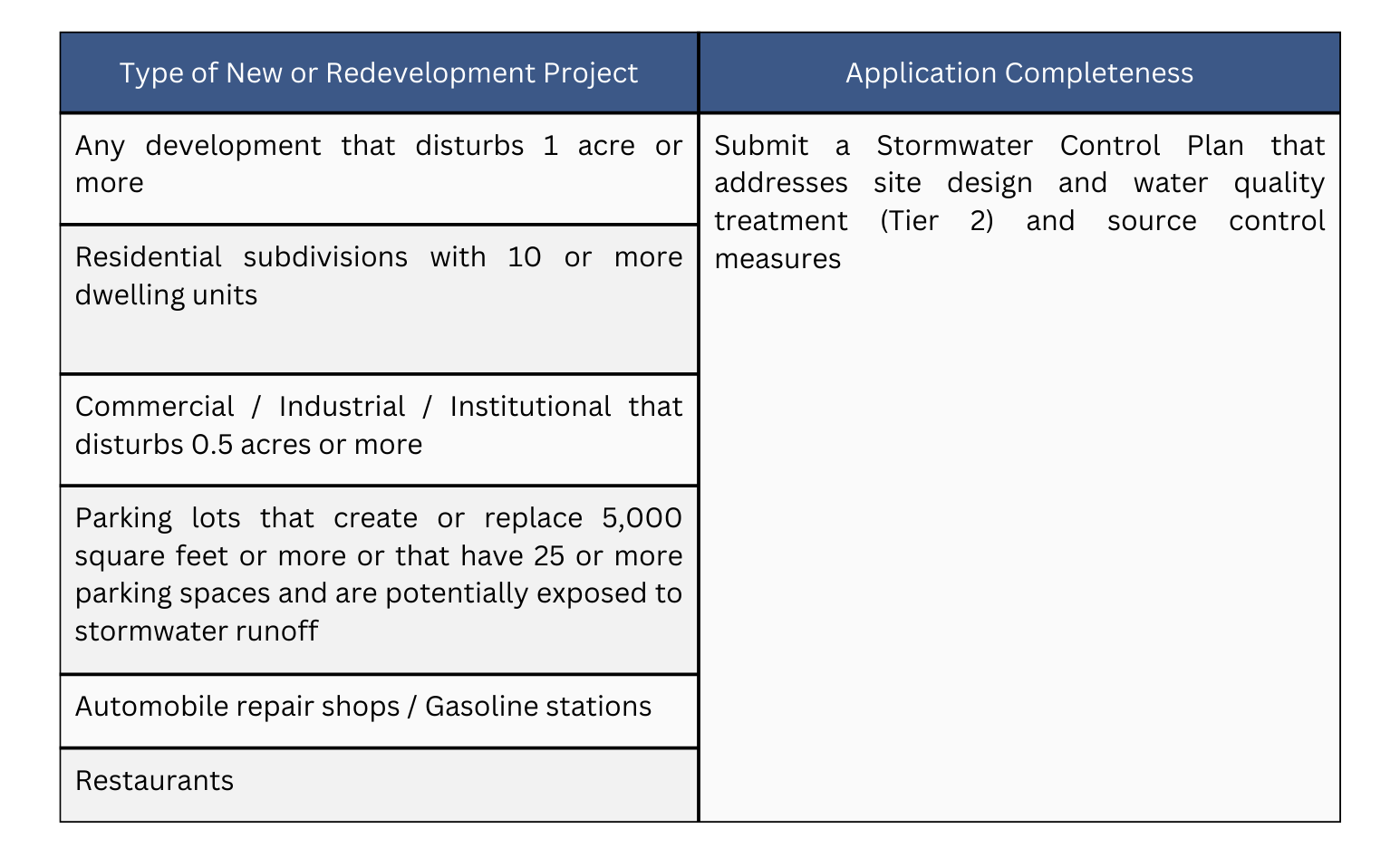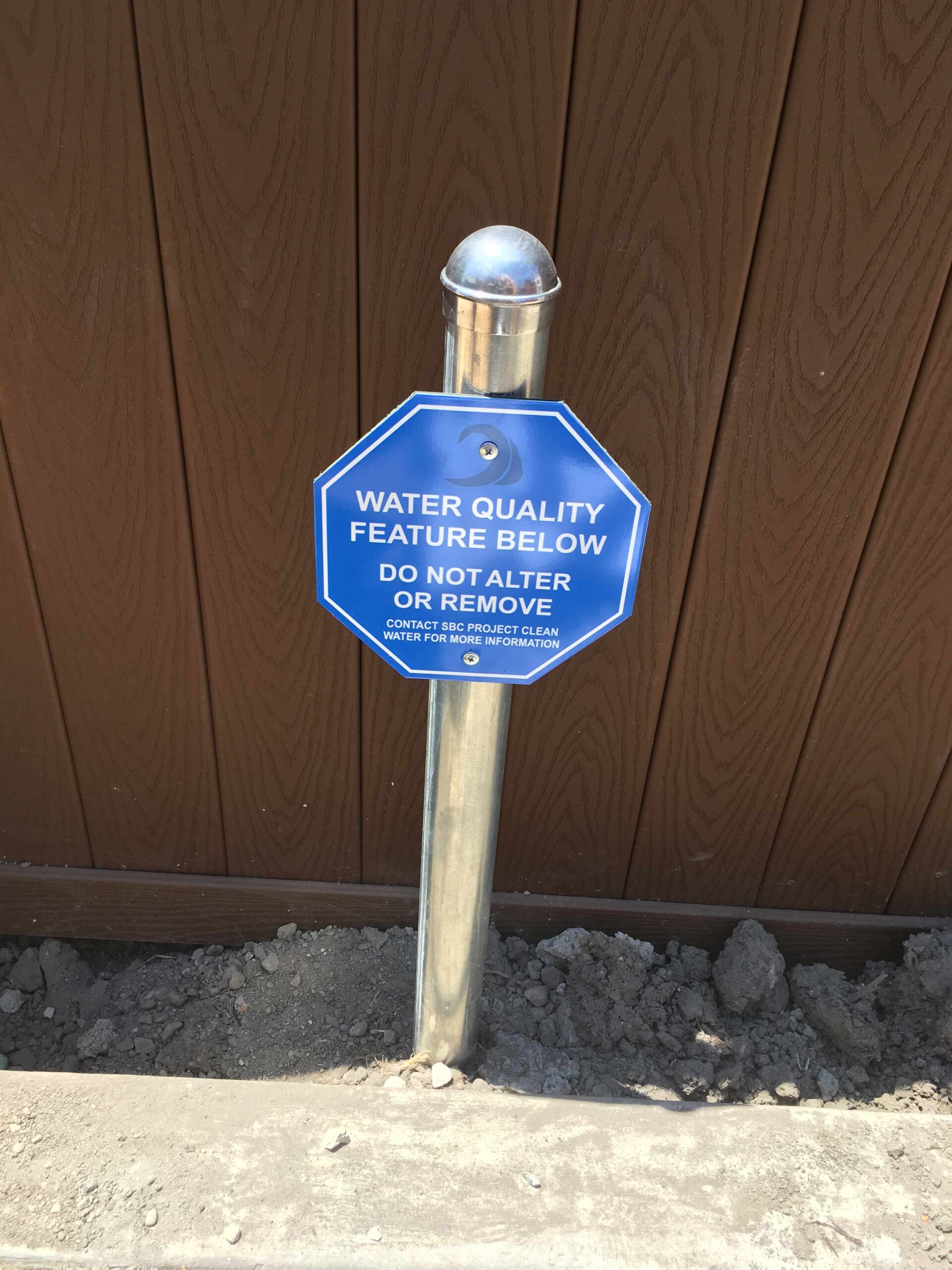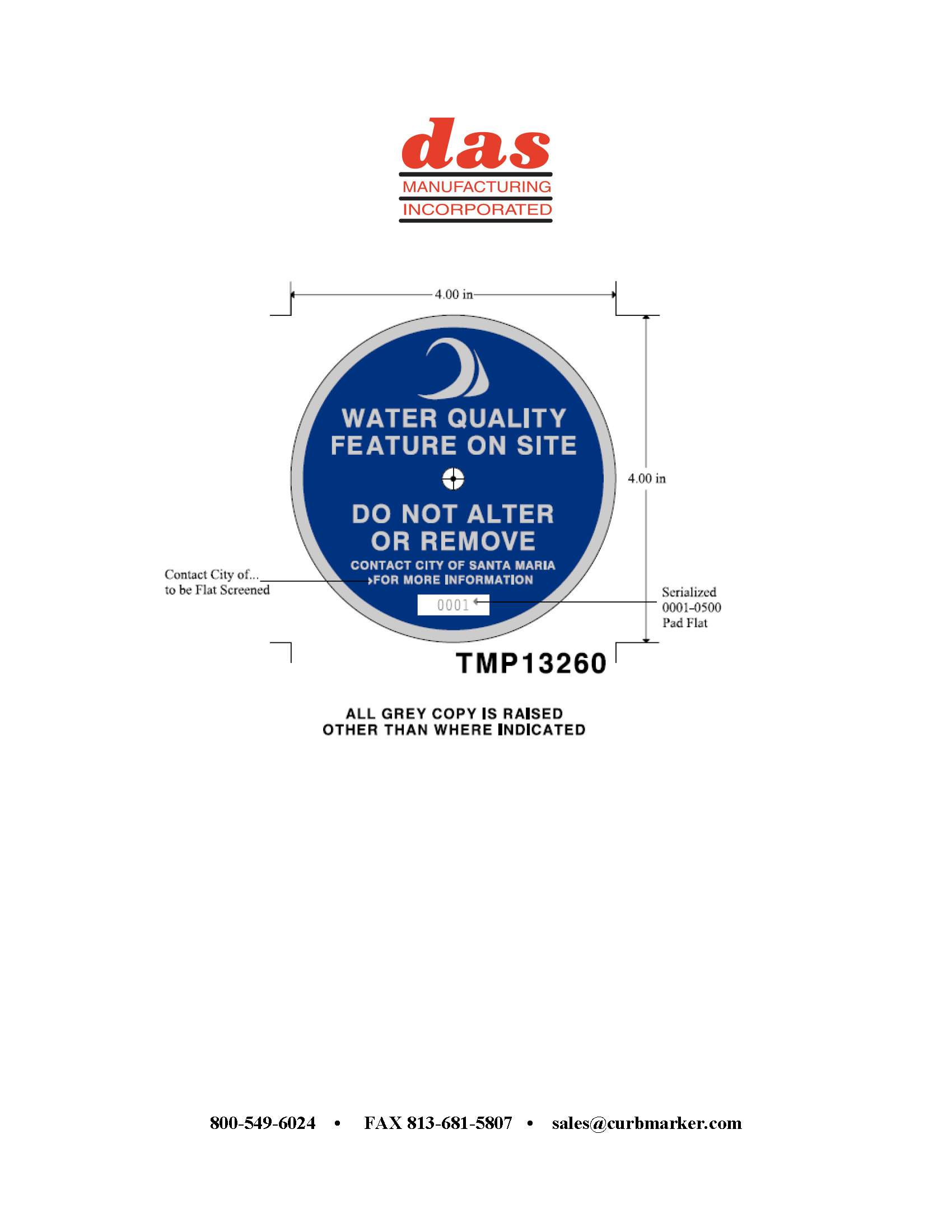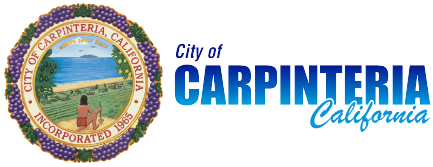Construction Activities
Development projects must prevent sediment and other construction related pollutants from entering the storm drain, as detailed in Carpinteria Municipal Code Chapter 8.10, Watershed Management. The City regulates discharges from construction activities through permits issued by the Community Development Department and Public Works. This includes development permits and engineering/grading permits.
Permits that include earthwork require submittal of an Erosion and Sediment Control Plan, or in the case where a project is also subject to General Permit for Discharges of Storm Water Associated with Construction Activity (Construction General Permit, 99-08-DWQ), a Storm Water Pollution Prevention Plan or SWPPP can be submitted instead.
The Erosion and Sediment Control Plan (or SWPPP) addresses pollution prevention through the use of Best Management Practices to control erosion and non-stormwater discharges such as fueling, saw cutting, placing concrete, painting, etc. BMPs appropriate for the Erosion and Sediment Control Plan (or SWPPP) can be selected from the resources listed below.
New and Redevelopment
New and redevelopment projects in the City of Carpinteria must be designed to prevent water quality impacts from occurring, not just during construction, but throughout the life of the project.
City staff review project applications to determine mitigating conditions consistent with requirements in Section E.12 of the Statewide NPDES Municipal General Permit and, for projects located in the NPDES Permit Area, the Central Coast Regional Water Quality Control Board’s Post-Construction Stormwater Management Requirements.
All regulated projects shall follow the Santa Barbara County Stormwater Technical Guide
- Stormwater Technical Guide
- Stormwater Control Plan Template
- Stormwater Control Plan Template – Small (Tier 1) Projects
- Appendix A
- Appendix B
- Appendix C
- Stormwater Control Measures Sizing Calculator – with Orifice Sizing
- Sizing Calculator Instructions
The Stormwater Technical Guide explains how to design bioretention for development projects. Bioretention is the recommended solution for addressing the County’s stormwater requirements. Additional resources including bioretention construction specifications, plant selection, and a vendor list, can be found on the Central Coast Low Impact Development Initiative website.
An example Stormwater Control Plan for a commercial project is here; an example Stormwater Control Plan for a residential subdivision is here. In addition, the owner must sign a formal agreement – Maintenance Agreement (PDF) – with the Public Works Department for the long-term operation and maintenance of stormwater control facilities described in the Stormwater Control Plan. The owner’s signature must be notarized.
Projects Subject to These Requirements
Note: Net impervious surface equals new and replaced impervious area minus the total pre-project-to-post-project reduction in impervious area (if any).

Maintenance Plan
The maintenance plan is Exhibit C of the Maintenance Agreement. The maintenance plan describes the specific activities that must be performed to maintain the particular performance objectives stated in the Storm Water Control Plan. It must include:
- All structural measures to be maintained
- All maintenance activities for each measure (what needs to be done and how do they do it?)
- A schedule for maintenance (how often and when?)
- A site plan or vicinity map showing the location of all measures
- A cross section showing all subsurface features and their details (depth and material specifications) such as mulch, bioretention soil media, underdrain, cleanouts, inspection ports, and gravel at the bottom
- The statement, “Records of inspection and maintenance activities as outlined in this plan will be retained by the owner for a minimum of the past five years, and copies shall be made available upon request to the County of Santa Barbara Project Clean Water”
The document should be easy-to-use for any future owner, written in simple and plain language. The site plan must be legible and reproducible per County Recorder, which means black-and-white, with no small fonts or faint marks such as topo lines on a paper size of 8 by 11. View an example Maintenance Plan For Commercial Projects (PDF), and an example Maintenance Plan For a Residential Subdivision (PDF).
This is an example of an Inspection and Maintenance Log (PDF) that could be used in a Maintenance Plan if multiple facilities need to be inspected. Revise this template as appropriate for your project site, using language consistent with the Maintenance Plan.
Once the project is constructed, prior to Occupancy Clearance, the owner must provide certification by the project engineer that the stormwater control facilities were installed per approved plans or as approved by Project Clean Water.
If your project is conditioned to install storm drain markers, the County currently uses 4-inch round stainless metal markers in red and blue, that read “No Dumping – No Tire Basura”. They are manufactured by Almetec. Contact us at 805-880-3415 for details. View the Storm Drain Markers (PDF) for more information.
Signage
Signage is required. If you have a bioswale or bioretention area, signage must be visible and legible to alert landscape staff, installed above the height of the feature/mature vegetation, and constructed of a material that is weather resistant. For underground facilities, the marker must be located as close as possible to the inspection/maintenance portal(s), mounted on a post, or affixed directly to concrete. See examples provided and in the BIOSWALES Sign Draft (PDF).



Bioretention Soil Specifications
Bioretention soils shall be specified on the plans as a mixture of washed sand (60 to 70%) and compost (30 to 40%). The specification developed by the Bay Area Stormwater Management Agencies ( https://basmaa.org/ BASMAA website) is recommended. Information on how that specification was developed is found on the Flows to Bay website. For potential suppliers of the soil, or any of the other components of bioretention (permeable gravel layer, plants), see the Low Impact Development Initiative and download the list of vendors on the Central Coast Low Income Development Initiative website. For bioretention with tree planting, consider the recommendations found in the Biotreatment Soil Media and Specification (PDF).
In-Situ Soil Testing
Soil percolation rates are critical in the sizing of retention-based Stormwater Control Measures. The default option in the Stormwater Technical Guide (PDF), and provided in the Stormwater Control Measure Sizing Calculator (XLSM), is 0.75 inches per hour for soils in the Hydrologic Soil Group (HSG) A/B, and 0.25 inches per hour for HSG C/D. These values are well-established and based on empirical data developed for the Contra Costa Clean Water Program. Should you wish to submit your own percolation rate from on-site testing, please refer to Native Soil Assessment for Small Infiltration-Based Storm Water Control Measures (PDF) for test methods. This document was prepared for the Central Coast Low Impact Development Initiative by Earth Systems Pacific and is available on the Central Coast Water Board website. Because of limitations in the precision of infiltration rate testing at very low rates, this option may be used only to support an infiltration rate of 0.5 inches per hour or greater; otherwise, the default 0.25 inches per hour will apply.
Workshops
A November 20, 2015 workshop presentation describes how to use the Stormwater Technical Guide and Calculator. That presentation is available on YouTube, with accompanying slides, Requirements for Land Development Projects (PDF).
A January 9, 2014, presentation provides additional depth on the Low Impact Development design approach for meeting the Post-Construction Requirements. That presentation is available in a stand-alone viewer.
Storm Drain Atlas
The maps show public and private storm drain facilities, including creeks and infrastructure, within the unincorporated urban areas of Santa Barbara County. Santa Barbara County Storm Drain Atlas


 © 2024 City of Carpinteria. All Rights Reserved.
© 2024 City of Carpinteria. All Rights Reserved.